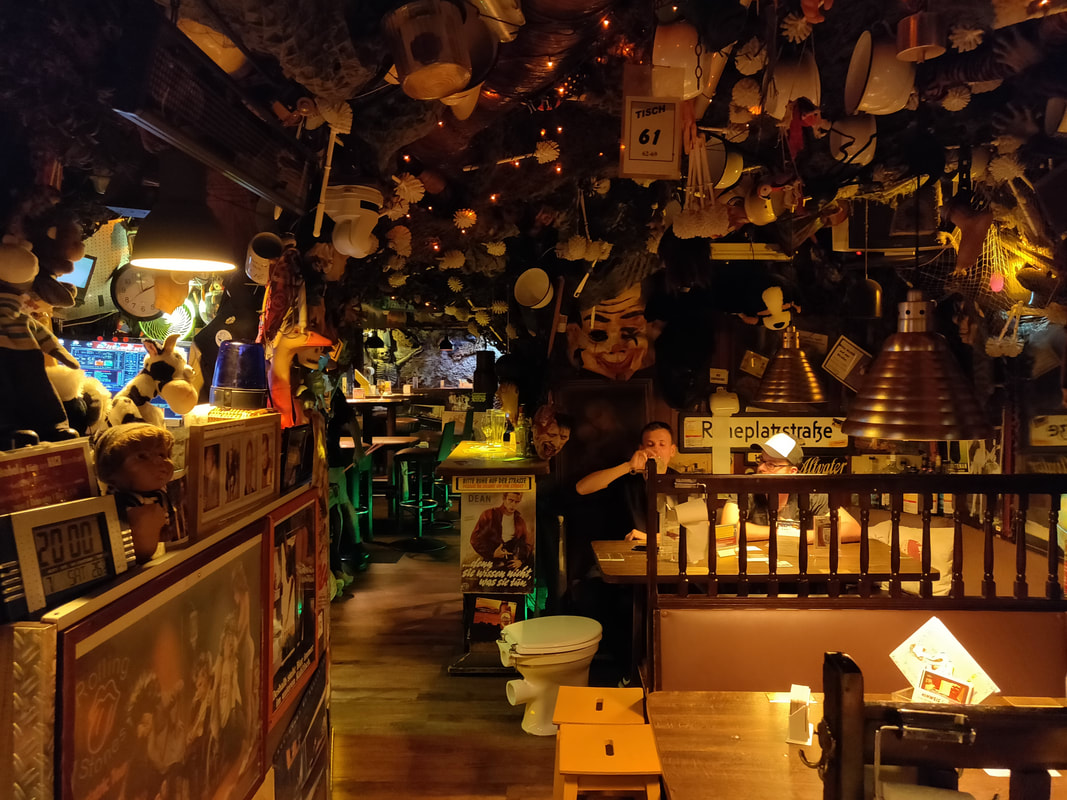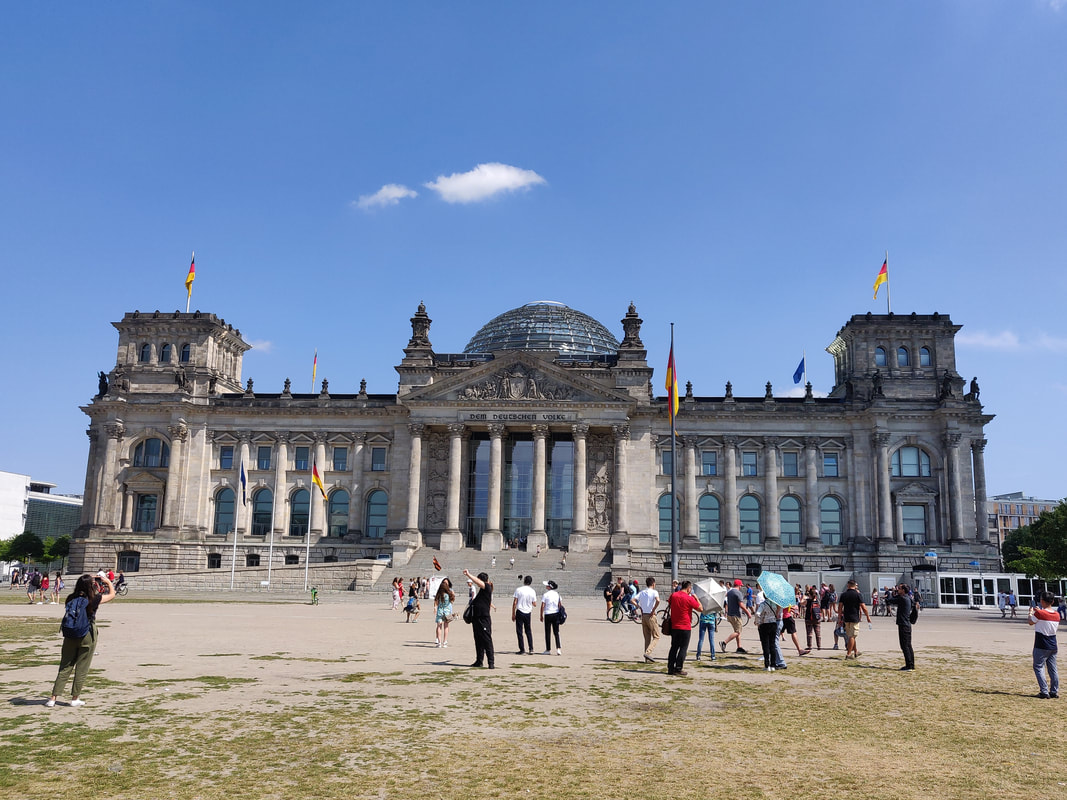|
Lately it seems as if Berlin is the coolest capital in Europe, and it's not hard to see why. A youthful energy, a creative spirit, reasonable prices, and one of the best nightlifes of any European city has seen an increasing number of people visit the German capital. But it hasn't always been this way. For much of the 20th century, Berlin was a city politically divided. I don't mean in the way the UK is divided between pro and anti-Brexit movements, or the US is divided between progressives and conservatives - but actually physically divided by a wall, with two philosophies so different, it would make UKIP and the Labour Party look similar. The city has rebounded incredibly well since those days, and is now one of the most 'must visit' places in Europe. You can read my detailed review of Berlin here, but below are 5 things I loved about Berlin. 5. Standing where Jesse Owens shut down the NazisEvery four years, images of the 1936 Olympics are shown on tv as part of the 'Olympic hype'. The 1936 games, were hosted in Berlin, in this very stadium, and represented the peak of Nazi rule in Germany. The games gave an opportunity to export fascism to the wider world - a chance to show that Nazi ideology was the future and the 20th century would be a German one. And the event went almost completely to plan. Despite significant controversy beforehand, contemporary reports viewed the games as a success. Perhaps even better for the regime was the success of the Germany team, topping the medal count. However, the enduring story from the games is that of Jesse Owens, an African-American who won four gold medals in front of the watching Fuhrer, and showcasing to the world the talents of non-Aryan athletes. It was fantastic to be in such an historical stadium. The memorials telling the story of the 1936 games. But despite the history, and the stadium's dated appearance, this isn't a museum. As recently as 2006, the stadium held a World Cup final and in 2015 hosted the Champions League final - and it's also the home to Hertha Berlin. Entry is fairly straight forward, you can buy tickets on the day for less than €10, these get you inside, you then pay extra if you want a guided tour. It's slightly out the way of the city centre, but well worth a visit to this iconic, historical stadium. 4. The Berlin nightlifeIf there was one thing I heard more than any other before visiting Berlin, it was the crazy nightlife. As the city is at a crossroads between east and west, the city has the all the positives from each sphere. There's a lot to see and do - and the bars, restaurants and clubs here have a lot more character than those in Paris, London or New York. Most places are cheap, welcoming and there doesn't seem to be as much pretentiousness as there is in some of the major western cities. I'm sure if I looked hard enough I'd find it somewhere, but that pretentiousness doesn't flaunt itself in the same way it does in say London. One of the things I loved doing was joining a local bar crawl that gave a guided tour of the city nightlife - getting to see the Berlin streets after dark with what felt like hundreds of people from around the world. Berlin is a creative, youthful city - and this was the perfect showcase for it. I'm not a fan of alcohol, and you can happily have a sober night and still have a good time and see a different side to the city. 3. Exploring the city's tragic pastWhat do you think of when you think Berlin? I'll be honest, if someone told me to think of a word synonymous with Berlin, I'd think of wall. Destroyed by Prussian/east Elbian arrogance, and rebuilt through German determination and tenacity, this city has seen some pretty dark days in the previous century. The lowest point for the city came in the mid 20th century, when a ruined city was controlled by the Soviets, British, French and Americans through different zones of occupation. Eventually, the three western nations amalgamated their zones and to stop migration between the zones, the Soviets constructed a wall - similar to the Korean demilitarised zone. Over 60 miles of wall separated the two halves of the city for almost half a century. Over 100,000 crossings were attempted from east to west, with a success rate of less than 5% and at least 150-200 deaths. It seems crazy that this wall existed until the late 1980s in the middle of Europe's largest economy. Today a few sections of the wall still remain, and I visited a section near the Topography of Terror. This is an outdoor and indoor museum that housed the Gestapo secret police and SS organisations. A short walk from there is Checkpoint Charlie, the entrance to the American zone. Although nothing more than a tacky tourist spot now, the nearby Checkpoint Charlie memorial across the road is worth visiting. 2. Seeing the skyline from KlunkerkranichThis will take you a long way out of the city centre, but is definitely worth the trip. We spent an afternoon lounging around on the rooftop of Klunkerkranich, a creative, alternative type of rooftop bar with a very laid back vibe. It's not exactly an easy place to find. The taxi dropped us outside a large shopping centre, and we got into a lift that took us to a multi-storey car park. It took a good 5-10 minutes of walking around a couple of different floors before we began to hear noise, and eventually we turned the corner to see the entrance. The USP of this bar is an amazing view of the Berlin skyline with the futuristic Fernsehturm dominating the city skyline. Honestly, if it wasn't for the searing heat - this is a place I could easily kill an afternoon in. 1. Exploring the ReichstagEvery now and then I come across a piece of architecture that makes me just stop, stare and forget where I am for a moment. It happened when I saw the Chrysler Building in New York, it happened when I gazed at Machu Picchu in Peru, it was the same feeling I got looking at the hills of Santiago from the Gran Torre in Chile, the city of Rio de Janeiro from Sugarloaf mountain, or the city of Kuala Lumpur from KL Tower - it happens every time I walk past St. Pauls in London - and it happened here. I have never seen historical architecture meld so beautifully with modernity - a neo-baroque building with a modern twist. The original building dates back to 1894 and was the seat of government for the German Empire and the Weimar Republic. The building was severely damaged by fire in 1933. The building remained unused and was severely bombed during the Second World War. It was refurbished half heartedly in the 1960s, but it wasn't until the famed British architect Norman Foster began work on it in 1992 that the building regained its former glory. Today you can visit the Reichstag for free - although you need to register for tickets and bring with you a photographic form of ID. You can read about the history of the building from within the glass dome, and climb the edges to get a panoramic view of the city from the roof. The Reichstag is a reflection of this city and tells the story of Berlin - a story of the rise of a city with imperial ambitions, the darkness and desolation following its fall, and its rise again as a unique, creative city that is a melting pot of different people and styles. I really enjoyed Berlin. It's one of those places where you can't put your finger on exactly why you like it - but you just know you do. It has a vibe, a feeling that is unique amongst capital cities, particularly in Europe. It's edgy, it's rebellious and it's determined. I would definitely visit Berlin again, and I would recommend it as a destination for others. As a Sikh, other than the odd stare here and there, it felt perfectly safe to work around late at night and not be troubled. Comments are closed.
|
AuthorBritish Sikh, born in the Midlands, based in London, travelling the world seeing new cultures. Categories
All
|








 RSS Feed
RSS Feed